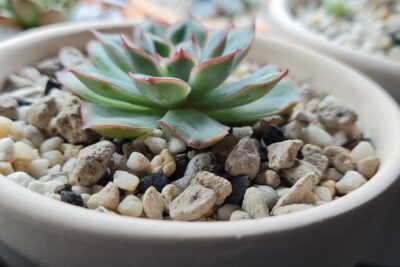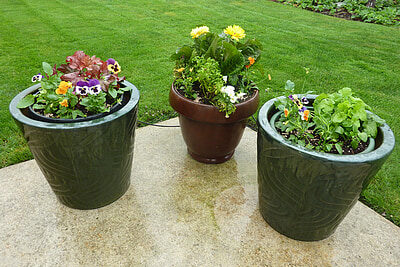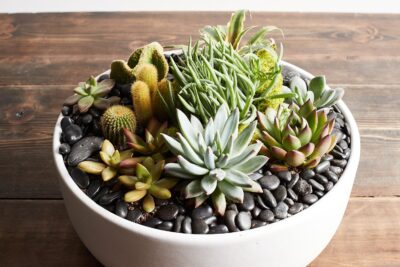
Perfect Plant Partners: Best Succulents for Snake Plants

When it comes to indoor plants, snake plants are a popular choice for their low-maintenance nature and air-purifying qualities. These striking plants, also known as Sansevieria, are known for their long, sword-shaped leaves and ability to thrive in a variety of conditions. One way to enhance the beauty and overall health of snake plants is by pairing them with other succulents, creating a perfect plant partnership that not only adds visual interest but also promotes better growth.
We will explore some of the best succulents to pair with snake plants. We will discuss the benefits of companion planting, including improved air quality, pest control, and aesthetic appeal. Additionally, we will provide a list of compatible succulents that thrive in similar light and watering conditions as snake plants, making it easier for plant enthusiasts to create stunning and harmonious indoor plant arrangements.
- Choose succulents with similar light and watering needs
- Opt for succulents that have contrasting colors and textures to create visual interest
- Look for succulents that have similar growth habits to ensure they don't outcompete each other
- Consider succulents that have similar temperature requirements to create an ideal environment
- Avoid succulents that are prone to pests or diseases to protect the overall health of the plants
- Select succulents that have similar soil requirements to make maintenance easier
- Pair succulents that have similar root systems to prevent overcrowding in the pot
- Combine succulents that have similar size and shape to create a harmonious arrangement
- Choose succulents that have similar propagation methods for easy propagation and sharing
- Frequently Asked Questions
Choose succulents with similar light and watering needs
When selecting companion plants for your snake plant, it's important to consider their light and watering requirements. Succulents, like snake plants, thrive in well-draining soil and prefer bright, indirect light. Therefore, it's ideal to choose succulents that have similar preferences.
Here are some excellent succulent options that make perfect partners for snake plants:
1. Echeveria
Echeverias are popular succulents known for their rosette-shaped leaves and stunning colors. They prefer bright light and moderate watering, making them an excellent match for snake plants. Placing them together will create a visually appealing display.
2. Haworthia
Haworthias are small, compact succulents that thrive in bright, indirect light. They require minimal watering and prefer to dry out between waterings, just like snake plants. Pairing a snake plant with a Haworthia will create a beautiful contrast in size and texture.
3. Sedum
Sedums are versatile succulents that come in various shapes and sizes. They prefer full sun to partial shade and well-draining soil. Their water requirements are similar to snake plants, making them an excellent choice for a companion planting arrangement.
 Where to Find Top-Quality Terracotta Pots for Succulents
Where to Find Top-Quality Terracotta Pots for Succulents4. Crassula
Crassulas, also known as jade plants, are popular succulents with thick, fleshy leaves. They thrive in bright light and require minimal watering, similar to snake plants. Combining these two succulents will create a visually pleasing arrangement that requires low maintenance.
Remember to consider the size and growth habits of the succulents when choosing companions for your snake plant. You want to ensure they have enough space to grow and don't overshadow or suffocate each other.
Selecting succulents with similar light and watering needs is crucial when creating a perfect plant partnership with your snake plant. The suggested succulents such as Echeveria, Haworthia, Sedum, and Crassula make excellent choices that will not only complement your snake plant but also thrive under similar care conditions.
Opt for succulents that have contrasting colors and textures to create visual interest
1. Echeveria
One of the best succulents to pair with snake plants is the Echeveria. With its rosette-shaped foliage and stunning color variations, it adds a touch of elegance to any arrangement. The Echeveria comes in various shades, from vibrant greens to deep purples and even blues. Its smooth, fleshy leaves create a beautiful contrast against the tall, upright leaves of the snake plant.
2. Haworthia
If you're looking for a succulent that complements the architectural form of snake plants, look no further than the Haworthia. This small succulent features thick, spiky leaves that grow in a rosette pattern. Its unique texture adds depth and visual interest when paired with the sleek, sword-like leaves of the snake plant. The Haworthia comes in different varieties, including those with translucent leaves and intricate patterns.
3. Sedum
Sedums, also known as stonecrops, make excellent companions for snake plants. These low-growing succulents feature fleshy, rounded leaves that come in various shades of green, red, and even purple. Their trailing growth habit adds a cascading effect when planted alongside the upright snake plant. Sedums are also drought-tolerant, making them a perfect match for the water-wise snake plant.
4. Aloe Vera
Aloe vera is not only a popular medicinal plant but also a great partner for snake plants. This succulent has thick, spiky leaves that grow in a rosette shape, similar to the Haworthia. The vibrant green color of the aloe vera leaves contrasts beautifully with the snake plant's dark green foliage. Additionally, having an aloe vera plant nearby is beneficial, as it can provide natural remedies for minor burns and skin irritations.
 Is My Succulent Outgrowing Its Pot?
Is My Succulent Outgrowing Its Pot?5. Crassula
Crassulas, commonly known as jade plants, are versatile succulents that pair well with snake plants. They have thick, fleshy leaves that range in color from bright green to shades of red and burgundy. Their compact, bushy growth habit creates a visually appealing contrast to the tall and upright snake plant. Crassulas are also easy to care for, making them an ideal choice for beginners or busy plant enthusiasts.
When selecting succulents to accompany your snake plants, remember to consider their growth habits, colors, and textures. By choosing succulents with contrasting qualities, you can create a visually striking and harmonious arrangement that will elevate the overall aesthetics of your indoor garden.
Look for succulents that have similar growth habits to ensure they don't outcompete each other
When it comes to pairing succulents with snake plants, it's important to choose plants that have similar growth habits. This ensures that they won't outcompete each other for resources such as sunlight, water, and nutrients. By selecting the right succulent companions, you can create a harmonious and visually appealing display.
1. Hens and Chicks (Sempervivum)
Hens and Chicks, also known as Sempervivum, are ideal partners for snake plants. These succulents feature rosette-shaped clusters of fleshy leaves, creating a striking contrast with the upright foliage of snake plants. Hens and Chicks prefer well-draining soil and moderate sunlight, making them a perfect match for snake plants.
2. Echeveria
 Discover Amazing Deals on Succulents: Find the Best Prices Today!
Discover Amazing Deals on Succulents: Find the Best Prices Today!Echeveria is another popular choice to pair with snake plants. These rosette-shaped succulents come in a variety of colors, from vibrant green to stunning purples and pinks. Like snake plants, Echeveria thrives in bright, indirect light and well-draining soil. Their compact size and low water requirements make them an excellent companion for snake plants.
3. Jade Plant (Crassula ovata)
The Jade Plant, also known as Crassula ovata, is a versatile succulent that complements snake plants beautifully. With its thick, oval-shaped leaves and woody stems, the Jade Plant adds texture and depth to any arrangement. Both snake plants and Jade Plants prefer similar growing conditions, including bright light and infrequent watering.
4. Aloe Vera
Aloe Vera is not only a popular medicinal plant but also a great companion for snake plants. With its spiky, fleshy leaves and ability to store water, Aloe Vera complements the architectural beauty of snake plants. Both plants require similar care, including bright, indirect light and well-draining soil.
5. Zebra Plant (Haworthia fasciata)
Zebra Plant, also known as Haworthia fasciata, is a compact succulent that pairs well with snake plants. Its distinctive white stripes on dark green leaves create a captivating contrast. Both snake plants and Zebra Plants thrive in similar conditions, including bright, indirect light and well-draining soil.
 Succulent Care Guide: Green up Your Space with Terracotta Pots
Succulent Care Guide: Green up Your Space with Terracotta PotsRemember, when combining succulents with snake plants, ensure that you provide adequate space for each plant to grow. Regularly check their watering needs and adjust accordingly. With the right selection of succulent partners, you can create a stunning and balanced display that enhances the beauty of your snake plants.
Consider succulents that have similar temperature requirements to create an ideal environment
When it comes to finding the perfect plant partners for your snake plants, it's important to consider their temperature requirements. Snake plants, also known as Sansevieria, thrive in temperatures ranging from 60 to 85 degrees Fahrenheit (15 to 29 degrees Celsius). To ensure your succulent garden flourishes, choose succulents that have similar temperature preferences.
One excellent choice is the Echeveria succulent. With its rosette-shaped leaves and vibrant colors, it adds a beautiful contrast to the tall, upright nature of snake plants. Echeverias also prefer temperatures between 60 and 85 degrees Fahrenheit, making them an ideal companion for snake plants.
Another popular succulent that pairs well with snake plants is the Haworthia. This succulent has a similar preference for temperatures ranging from 60 to 85 degrees Fahrenheit. With its distinctive, spiky leaves and compact size, the Haworthia complements the architectural beauty of snake plants perfectly.
If you're looking for a more delicate and intricate succulent to pair with your snake plants, consider the Crassula. This succulent, also known as the Jade Plant, features small, fleshy leaves and prefers temperatures between 60 and 80 degrees Fahrenheit. The Crassula's unique foliage adds a touch of elegance to any succulent arrangement.
Lastly, the Aloe succulent is an excellent choice to create a visually appealing display alongside your snake plants. Aloe succulents thrive in temperatures ranging from 55 to 80 degrees Fahrenheit. With their spiky leaves and healing properties, Aloe plants bring a touch of versatility to any succulent garden.
 Succulent Gift Ideas: Unique Birthday Surprises
Succulent Gift Ideas: Unique Birthday SurprisesRemember to consider the lighting requirements of these succulents as well. While snake plants tolerate low light conditions, some succulents may require more sunlight. Ensure that your selected succulents have compatible lighting needs to create a harmonious and thriving ecosystem.
Benefits of pairing succulents with snake plants
Pairing succulents with snake plants not only creates a visually appealing display but also offers several benefits to your indoor garden:
- Enhanced air purification: Snake plants are known for their air-purifying properties, removing toxins such as formaldehyde and benzene from the air. By combining them with succulents, you can further enhance the air quality in your home.
- Increased humidity: Succulents release moisture into the air through a process called transpiration. This can help increase humidity levels, which is beneficial for both plants and humans, especially in dry indoor environments.
- Low-maintenance care: Both snake plants and succulents are known for their resilience and ability to thrive in less-than-ideal conditions. Pairing them together means you'll have a beautiful display that requires minimal care and attention.
So, if you're looking to create a stunning and low-maintenance indoor garden, consider pairing your snake plants with these compatible succulents. You'll not only enhance the aesthetics of your space but also create a healthier and more vibrant environment.
Avoid succulents that are prone to pests or diseases to protect the overall health of the plants
When choosing succulents to pair with snake plants, it's essential to consider their susceptibility to pests and diseases. Opting for varieties that are naturally resistant can help safeguard the overall health of your plants. By selecting the right partners, you can create a harmonious arrangement that thrives with minimal maintenance.
To ensure a successful pairing, avoid succulents that are known to attract common pests such as mealybugs or aphids. These pests can quickly spread to neighboring plants and cause damage to the entire collection. Additionally, steer clear of succulents that are prone to fungal or bacterial infections, as these can easily spread to other plants in close proximity.
By prioritizing pest and disease resistance, you can maintain a vibrant and thriving display of succulents. Here are some top choices that make perfect partners for snake plants:
 Can Cacti and Succulents Thrive Together in a Mixed Planting?
Can Cacti and Succulents Thrive Together in a Mixed Planting?1. Sedum "Burro's Tail" (Sedum morganianum)
Sedum "Burro's Tail" is a popular succulent with trailing stems that resemble the tail of a burro. This succulent is known for its resilience and ability to withstand various conditions. Its fleshy leaves store water, making it drought-tolerant and less prone to common succulent pests. Pairing it with snake plants not only adds visual interest but also creates a low-maintenance combination.
2. Echeveria (Echeveria spp.)
Echeverias are a diverse group of succulents that come in various shapes, sizes, and colors. These rosette-forming succulents have thick leaves that store water, making them ideal partners for snake plants. They are generally less susceptible to pests and diseases, making them a reliable choice for a harmonious display.
3. Haworthia (Haworthia spp.)
Haworthias are small, compact succulents that are visually appealing and relatively easy to care for. These plants have distinct rosette-like arrangements of leaves and are known for their low water requirements. Their hardy nature and resistance to pests and diseases make them excellent companions for snake plants.
4. Crassula ovata (Crassula ovata)
Also known as "Jade Plant," Crassula ovata is a popular succulent with thick, oval-shaped leaves. This succulent is highly adaptable and can thrive in various conditions. Its sturdy leaves make it less prone to pests and diseases, ensuring it remains a reliable partner for your snake plant.
Remember, when selecting succulents for your snake plant arrangement, prioritize those with pest and disease resistance. By doing so, you can enjoy a beautiful and healthy display that will thrive for years to come.
Select succulents that have similar soil requirements to make maintenance easier
When it comes to pairing succulents with snake plants, it's important to select ones that have similar soil requirements. This not only helps in creating an aesthetically pleasing arrangement but also makes maintenance a breeze. Here are some of the best succulents that are perfect partners for snake plants:
 Discover the Top Locations for Buying Succulents Near Me
Discover the Top Locations for Buying Succulents Near Me1. Echeveria
Echeverias are stunning rosette-shaped succulents that complement snake plants beautifully. They require well-draining soil and prefer bright, indirect sunlight. These succulents come in a wide range of colors, including shades of green, purple, and blue, adding a vibrant touch to your snake plant arrangement.
2. Haworthia
Haworthias are compact succulents that thrive in similar soil conditions as snake plants. They have distinctive, spiky leaves that create an interesting contrast when paired with the long, upright leaves of snake plants. Haworthias are also low-maintenance, making them an ideal choice for beginners.
3. Sedum
Sedums are versatile succulents that come in a variety of shapes and sizes. They require well-draining soil and prefer bright, indirect sunlight. Sedums can be trailing or upright, allowing you to experiment with different arrangements and create a visually appealing display when combined with snake plants.
4. Crassula
Crassulas, also known as jade plants, are popular succulents that are easy to care for. They have thick, fleshy leaves and prefer well-draining soil. Crassulas come in various shades of green and can add a touch of elegance to your snake plant arrangement.
5. Aloe Vera
Aloe vera is a well-known succulent that pairs beautifully with snake plants. It requires well-draining soil and bright, indirect sunlight. Aloe vera not only adds visual interest to your arrangement but also has numerous medicinal properties and can serve as a handy plant to have around the house.
- Note: It's important to ensure that the succulents you choose have similar water and light requirements as snake plants. This will help maintain a healthy and thriving display.
By selecting succulents that have similar soil requirements, you can create a stunning and harmonious display with your snake plants. Experiment with different combinations and arrangements to find the perfect plant partners that not only enhance the beauty of your space but also make maintenance a breeze.
Pair succulents that have similar root systems to prevent overcrowding in the pot
Why is it important to pair succulents with similar root systems?
 Online Guide: Where to Buy Glow In The Dark Succulents
Online Guide: Where to Buy Glow In The Dark SucculentsWhen growing succulents, it's crucial to consider their root systems. Pairing succulents with similar root systems in the same pot helps prevent overcrowding. Succulents have shallow root systems, and overcrowding can lead to root rot and other issues. By choosing succulents with similar root systems, you ensure that each plant has enough space to grow and thrive.
The best succulents to pair with snake plants
If you have a snake plant (Sansevieria) and want to create a visually appealing arrangement, here are some succulents that make perfect partners:
- Echeveria: Echeverias have rosette-shaped leaves and come in various colors and sizes. They have shallow root systems that are similar to snake plants, making them excellent companions.
- Haworthia: Haworthias are small succulents with thick, fleshy leaves. They are known for their unique textures and patterns. Like snake plants, they have shallow roots, making them compatible planting partners.
- Graptosedum: Graptosedums are hybrid succulents that combine the characteristics of Graptopetalum and Sedum plants. They have rosette-shaped leaves and can come in various colors. These succulents have shallow root systems, making them suitable companions for snake plants.
Tips for potting succulents together
When potting succulents together, keep the following tips in mind:
- Choose a well-draining potting mix: Succulents prefer well-draining soil to prevent waterlogged roots. Use a mix specifically designed for succulents or create your own by combining regular potting soil with perlite or coarse sand.
- Ensure the pot has drainage holes: Adequate drainage is crucial for succulents. Make sure the pot you choose has drainage holes to allow excess water to escape.
- Consider the height and growth habits: When pairing succulents, consider their height and growth habits. Place taller succulents towards the center or back of the arrangement and shorter ones towards the front or edges.
- Monitor watering needs: Different succulents have different watering requirements. Be mindful of each plant's needs and water accordingly. Avoid overwatering, as it can lead to root rot.
- Provide adequate sunlight: Succulents thrive in bright, indirect sunlight. Place the pot in a location where the plants can receive at least six hours of sunlight per day.
By pairing succulents with similar root systems and following these potting tips, you can create a beautiful and healthy arrangement that showcases the unique characteristics of snake plants and their succulent companions.
Combine succulents that have similar size and shape to create a harmonious arrangement
 Hardy & Sun-loving Succulents: Best Full Sun Ground Covers!
Hardy & Sun-loving Succulents: Best Full Sun Ground Covers!When it comes to creating the perfect plant partnership, it's important to consider the size and shape of the plants involved. This is especially true when pairing succulents with snake plants, as their unique forms can either complement or clash with one another. To ensure a harmonious arrangement, here are some of the best succulents to pair with snake plants:
1. Echeveria
Echeverias are stunning rosette-shaped succulents that come in a variety of colors, including vibrant greens, pinks, and purples. Their compact size and symmetrical form make them an excellent choice to pair with snake plants. Placing a small Echeveria alongside a tall snake plant creates a visually pleasing contrast in height and allows the unique characteristics of each plant to shine.
2. Sedum
Sedums, also known as stonecrops, are low-growing succulents with fleshy leaves that come in various shapes and sizes. Their trailing or sprawling growth habit makes them a great companion for snake plants. Consider planting a trailing Sedum in the same pot as your snake plant, allowing its cascading foliage to spill over the edge, creating a dynamic and visually appealing arrangement.
3. Haworthia
Haworthias are small succulents known for their distinctive rosette-like shape and patterned leaves. These compact plants are an ideal choice to pair with snake plants due to their similar growth habit and size. Placing a couple of Haworthias alongside a snake plant creates a visually balanced and aesthetically pleasing display.
4. Crassula
Crassulas, also known as jade plants, are popular succulents with thick, fleshy leaves and a tree-like growth habit. Their upright form contrasts beautifully with the spiky foliage of snake plants. Consider planting a smaller Crassula next to a snake plant to add height variation and create an interesting focal point in your plant arrangement.
- Pro tip: When choosing succulents to pair with snake plants, consider their light and water requirements. Select varieties that have similar care needs to ensure both plants thrive in the same environment.
By combining succulents that have similar size and shape with snake plants, you can create a visually pleasing and harmonious arrangement. Whether you choose Echeverias, Sedums, Haworthias, or Crassulas, these succulents will complement the unique characteristics of snake plants and elevate the overall aesthetic of your indoor garden.
Choose succulents that have similar propagation methods for easy propagation and sharing
 Finding the Perfect Venue for Selling Succulents at Farmers Markets
Finding the Perfect Venue for Selling Succulents at Farmers MarketsWhen it comes to pairing succulents with snake plants, it's important to consider their compatibility not just in terms of aesthetics, but also in terms of propagation methods. By selecting succulents that have similar propagation techniques, you can easily propagate and share them with friends and family.
Propagation is the process of creating new plants from existing ones, and it can be done in various ways such as leaf cuttings, stem cuttings, offsets, or division. Each method requires specific conditions and care, so it's beneficial to choose succulents that share the same propagation method as snake plants to simplify the process.
Here are some succulents that pair well with snake plants in terms of propagation:
1. Echeveria
Echeveria is a popular succulent known for its rosette-shaped leaves and vibrant colors. It can be easily propagated through leaf or stem cuttings, which makes it an ideal companion for snake plants. Simply take a healthy leaf or stem cutting, allow it to callus for a few days, and then plant it in well-draining soil. With proper care, you'll soon have new Echeveria plants to enjoy.
2. Sedum
Sedums are versatile succulents that come in various shapes and sizes, making them a great match for snake plants. They can be propagated through leaf or stem cuttings as well as offsets. Simply remove a leaf or stem cutting, let it dry and callus, and then plant it in well-draining soil. Alternatively, separate the offsets from the main plant and replant them to create new Sedum plants.
3. Haworthia
Haworthias are small succulents with rosette-shaped leaves that are often adorned with unique patterns. They can be propagated through offsets or division, which makes them compatible with snake plants. Gently separate the offsets from the main plant or divide the clumps, ensuring that each new plant has roots attached. Plant them in well-draining soil, and they will thrive alongside your snake plants.
Remember, when propagating succulents, it's essential to provide them with the right conditions, such as bright indirect light, well-draining soil, and appropriate watering. With careful attention and proper care, you can easily propagate these succulents and create a stunning display of snake plants and their perfect partners.
Frequently Asked Questions
1. What are succulents?
Succulents are plants that have thick, fleshy leaves or stems that store water. They are known for their ability to survive in arid conditions.
2. What are snake plants?
Snake plants, also known as Sansevieria, are a type of succulent that have long, sword-shaped leaves. They are known for their hardiness and ability to tolerate low light and neglect.
3. Why are succulents good companions for snake plants?
Succulents make great companions for snake plants because they have similar water and light requirements. They also add variety and visual interest to a collection of snake plants.
4. What are some good succulents to pair with snake plants?
Some good succulents to pair with snake plants include Echeveria, Haworthia, Aloe, and Sedum. These succulents have similar care needs and complement the tall, upright growth of snake plants.
If you want to read more articles similar to Perfect Plant Partners: Best Succulents for Snake Plants, you can visit the Planters and Arrangements category.






You Must Read